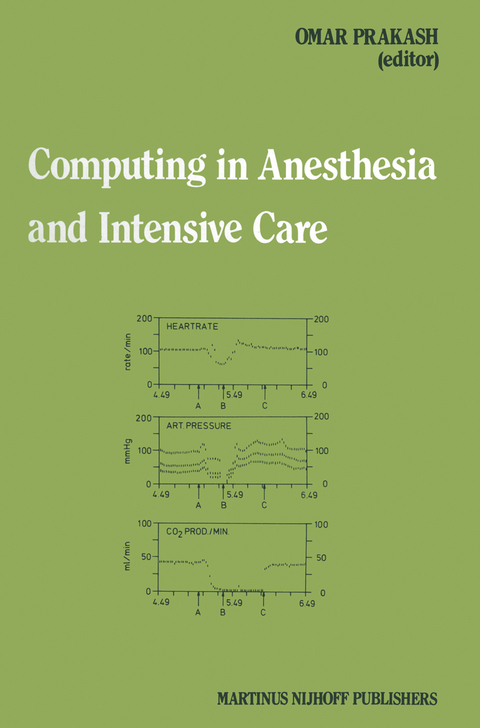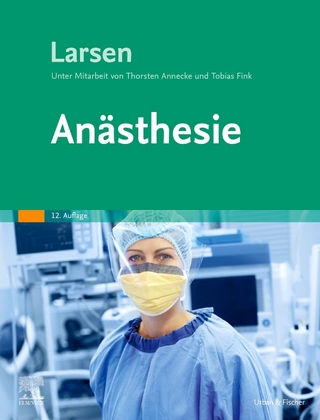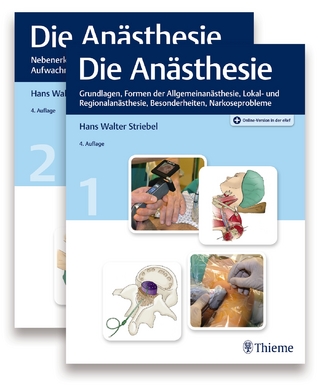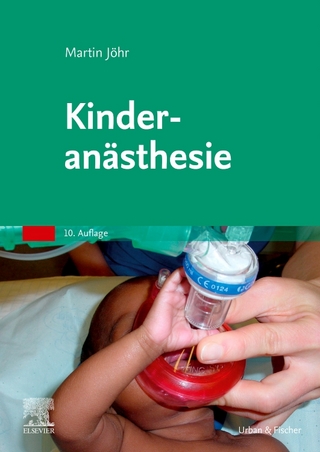
Computing in Anesthesia and Intensive Care
Springer (Verlag)
978-94-009-6749-6 (ISBN)
Computer operating systems for patient monitoring.- On the use of computers in the practice of anaesthesia.- Computerized data acquisition and display in anesthesia.- Microcomputer based automatic capture of signals from non-invasive instruments.- Physiologic monitoring of critically ill patients: computerized data acquisition, outcome prediction, organisation of therapy and prospective clinical trials.- Set up and results ICU database.- An interactive information system for anaesthesia.- Automated analysis of the esophageal accelerogram as a minimally invasive monitor of manifest contractile state.- Information transfer from operating room to ICU 10.- Energy metabolism.- Gas distribution and ventilation-perfusion relationships during anaesthesia and in acute respiratory failure.- Continuous monitoring of intrathoracic fluid.- The potential of computer modelling techniques in intensive care medicine.- An interactive program for intravenous drug infusion management.- Computer assisted learning in anaesthesiology.- Teaching with “ATTENDING”: Tutorial use of an expert system.- Introductory courses in computing for anaesthetists.- The use of computer-generated numbers in interpreting the EEG.- Automatic EEG monitoring during anesthesia.- Computerized EMG and EEG correlates of consciousness.- Computer control of anesthesia delivery.- Computer controlled anaesthesia.- Computer regulated sodium nitroprusside infusion for blood pressure control.- Computer controlled infusion of drugs during anesthesia: methods of muscle relaxant and narcotic administration.- Oxygen requirements during anesthesia.- Real time oximetry.- Graphic presentation of blood gas data.- Teaching the interpretation of acid-base and blood gas parameters by computer application.- Visual evoked potentialsduring cardiac surgery, basic considerations.- Phosphorus nuclear magnetic resonance (31 P NMR): a computer based instrument for studying brain hypoxia.- Measuring pulmonary blood flow with an 8085.- A microcomputer-based charting system for documentation of heamodynamic, respiratory parameters and drug administration during cardiac anaesthesia.- Computer control of Intravenous anesthesia.
| Reihe/Serie | Developments in Critical Care Medicine and Anaesthesiology ; 5 |
|---|---|
| Zusatzinfo | 448 p. |
| Verlagsort | Dordrecht |
| Sprache | englisch |
| Maße | 155 x 235 mm |
| Themenwelt | Medizin / Pharmazie ► Medizinische Fachgebiete ► Anästhesie |
| Medizin / Pharmazie ► Medizinische Fachgebiete ► Intensivmedizin | |
| Medizin / Pharmazie ► Physiotherapie / Ergotherapie ► Orthopädie | |
| Technik ► Medizintechnik | |
| ISBN-10 | 94-009-6749-7 / 9400967497 |
| ISBN-13 | 978-94-009-6749-6 / 9789400967496 |
| Zustand | Neuware |
| Informationen gemäß Produktsicherheitsverordnung (GPSR) | |
| Haben Sie eine Frage zum Produkt? |
aus dem Bereich


